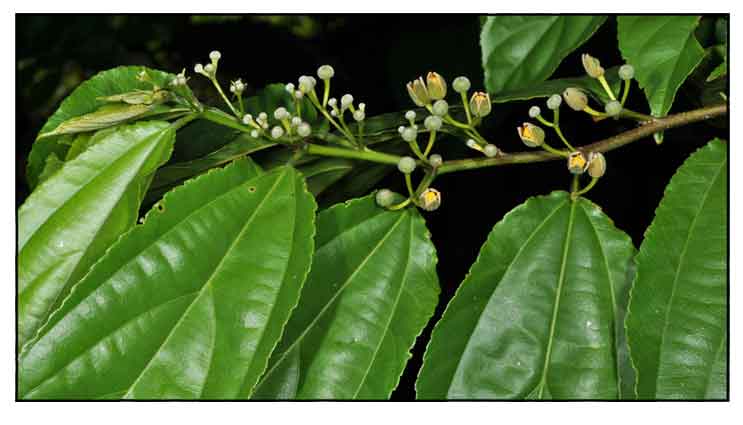
Family • Malvaceae
Dalaw
Danglin
Grewia multiflora Juss.
TWO-LOBED CROSSBERRY
Guang ye bian dan gan
| Scientific names | Common names |
| Grewia didyma Roxb. ex G.Don | Dalaw (Benguet) |
| Grewia jinghongensis Y.Y.Qian | Danglin (Tagalog) |
| Grewia multiflora Juss. | Serrulate-leaved grewia (Engl.) |
| Two-lobed crossberry (Engl.) | |
| Grewia multiflora Juss. is an accepted species. KEW: Plants of the World Online | |
| Some compilations list Grewia serrulata DC., G. glabra, G. laevigata as a synonyms, along with confusing sharing of common names and attribution of studies. | |
| Danglin is a local name shared by Canavalia cathartica (Silky sea bean) and Grewia multiflora (Dalaw). | |
| Other vernacular names |
| CHINESE: Guang ye bian dan gan. |
| INDIA: Kukurshita, Kukur-huta (Assamese), panisara (Bengali), Bhansuuli, Kakki, Kaori, Kathbhemmal, Phirsan (Hindi), Gurguri, Javanigale, Kadu patang, Kayori, Murige, Sanna salli (Kannada), Anakkottimaram (Malayalam), Bhimal (Nepali), Anaikatti maram (Tamil), Potriki, Tegali (Telugu). |
Distribution Studies Availability |
September 2023
![]()
 |
| PHOTOS / ILLUSTRATIONS |
| IMAGE SOURCE: Grewia multiflora - flowering branch / Copyright © 2012 by P B Pelser & J F Barcelona teve.B. (contact: [email protected]) [ref. DOL42444] / Non-Commercial Use / click on image or link to go to source page / Phytoimages.siu.edu |
| OTHER IMAGE SOURCE: Grewia multiflora fruits / John Tann / Creative Commons Attribution 2.0 Generic / click on image or link to go to source page / Wikimedia Commons |
Additional
Sources and Suggested Readings |
• |
DOI: It is not uncommon for links on studies/sources to change. Copying and pasting the information on the search window or using the DOI (if available) will often redirect to the new link page. (Citing and Using a (DOI) Digital Object Identifier) |
| List of Understudied Philippine Medicinal Plants |
• |
 |



